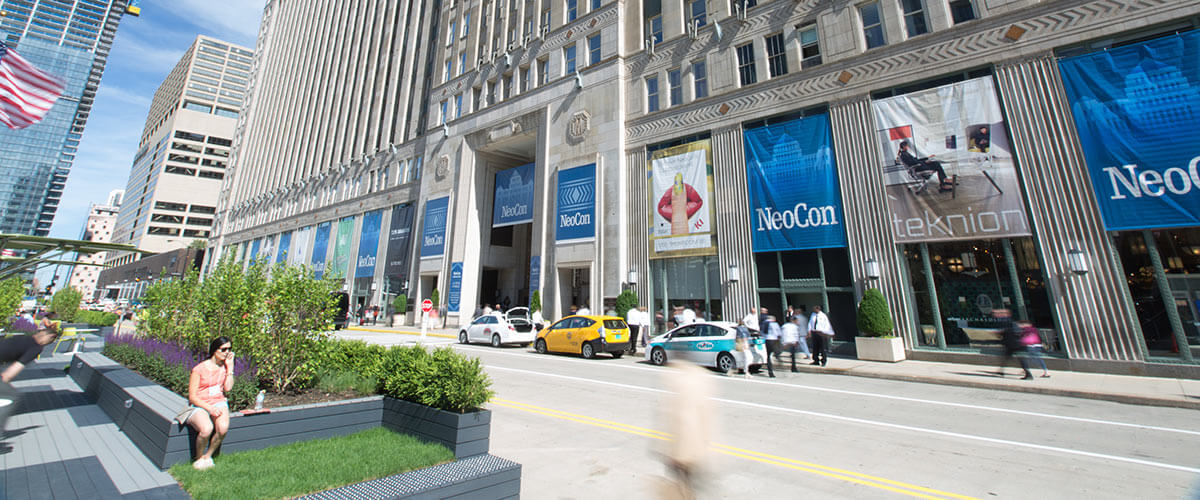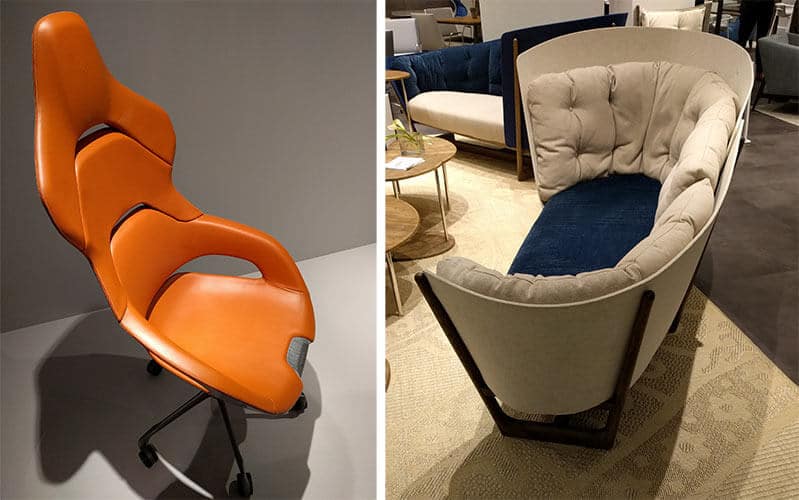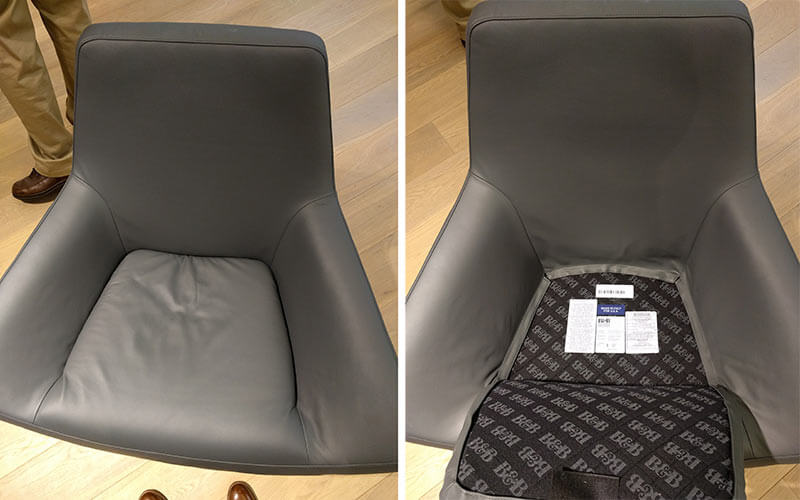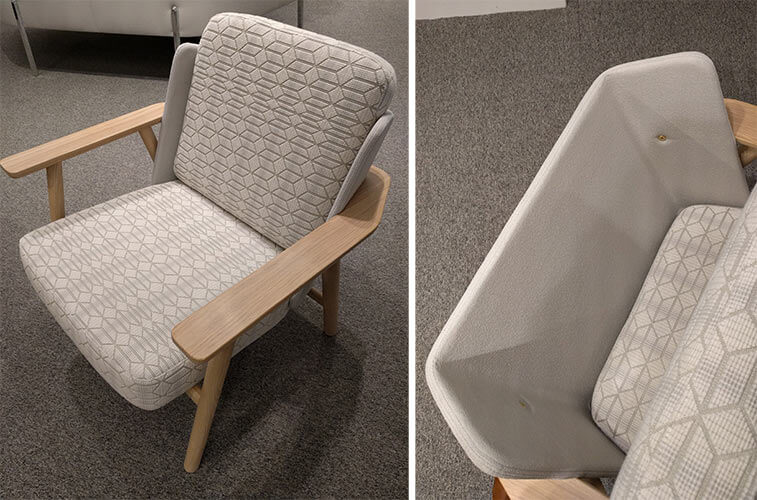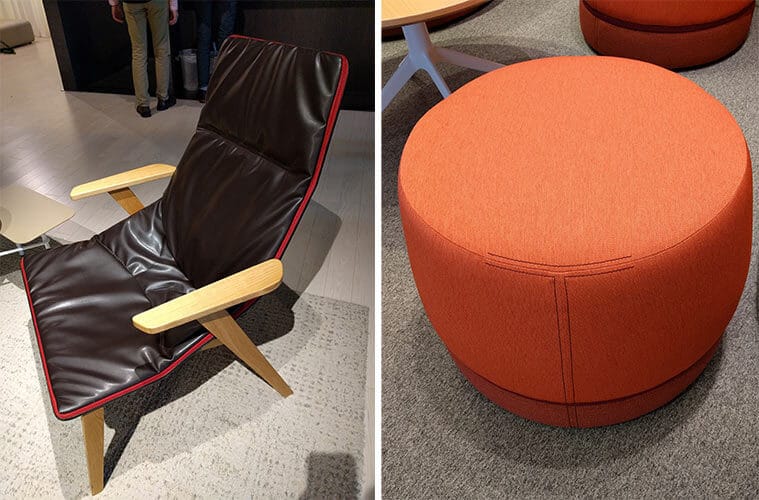
From An Engineer’s Perspective
For any engineer that works in and for the furniture industry, NeoCon is a must see. NeoCon is one of the largest trade shows featuring workplace furniture and the industries that support it such as seating, textiles, technology, and flooring to name just a few. A dozen folks from DISHER took a bus trip, organized by the West Coast Chamber, over to NeoCon for a day to see what was new and what DISHER worked on, and to touch base with friends and clients. NeoCon is largely a design-centered show, and it gives attendees an efficient opportunity to experience a wide variety of new products, innovative prototypes, and inspiring design solutions.
As a member of the DISHER engineering team, it was rewarding to see the products we worked on displayed in several different showrooms. Many of us spent the last few months feverishly working on projects to make sure they were ready on time for NeoCon. There is great satisfaction in seeing our hard work come to fruition at such a grand level. Even when DISHER isn’t given direct acknowldgement for the work we contribute, it’s exciting to see the products we helped design and engineer win awards and be well-received in the marketplace.
As an engineer, I am less interested in textures, fabrics, and shapes. But I couldn’t help noticing the beautiful task chair collaboration between Haworth and Ferrari and the beautiful grained woods that were common themes this year.
More so, I was interested in understanding how the products worked and how they were made. I was constantly running my hands along the edges of chairs to find the seams in the upholstery, seeing how it was attached to the frame, and trying to understand why it might have been done one way over another.
I love seeing the different ways that components are assembled and attached. In commercial, institutional, and industrial workplace settings where you have frequent daily use and abuse of furniture, a robust design is important. There’s a fine line between allowing a chair to be easily serviced and making it easy for an end-user to take apart.
Workplace furniture is typically designed to be aesthetically pleasing and to last a long time with minimal servicing. For this reason, fasteners are frequently hidden from view. The upward trend of solid wood contributes to many designs with minimal or no fasteners. Because wood is relatively strong, product developers can build a robust chair with wood joints, dowels, and glue. When separate upholstered backs or seat pads are incorporated into the design, fasteners make an appearance.
Occasionally, furniture can be found where the seams or fasteners are celebrated. Rather than hiding them or making them blend in, a conscious decision is made to show them off.
At times I received funny looks from the salespeople in the showrooms. It seemed as if they were concerned that I was somehow deconstructing their products. They didn’t realize that I was playing one giant game of hide-and-seek and increasing my warehouse of knowledge to help our customers achieve even greater outcomes in the workplace furniture industry.
Written By: Eric Otto, Product Development Engineer
Eric has a B.S. in Mechanical Engineering and Design, Innovation & Society from Rensselaer Polytechnic Institute. He has experience with solid and surface modeling in SolidWorks, as well as building prototypes in the model shop. He’s also an avid Detroit sports fan and loves the outdoors.


